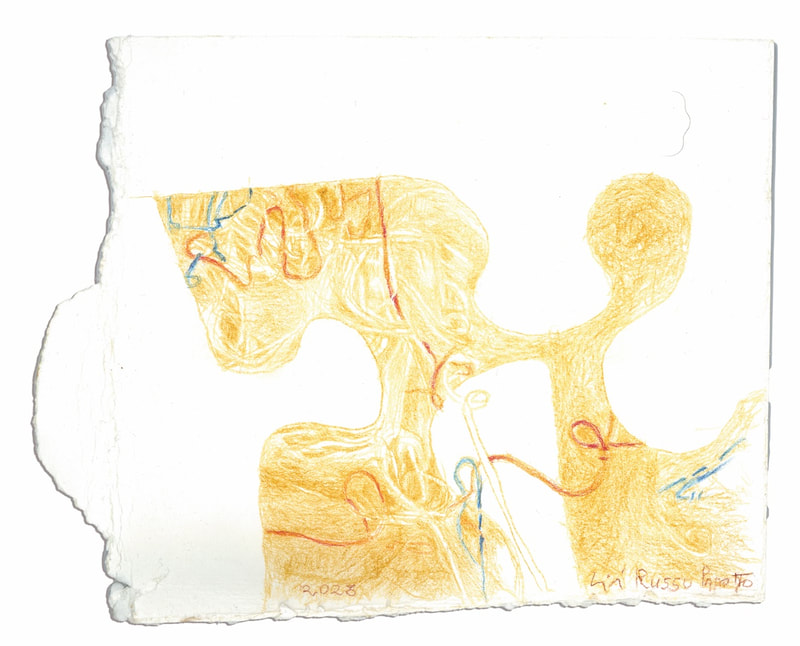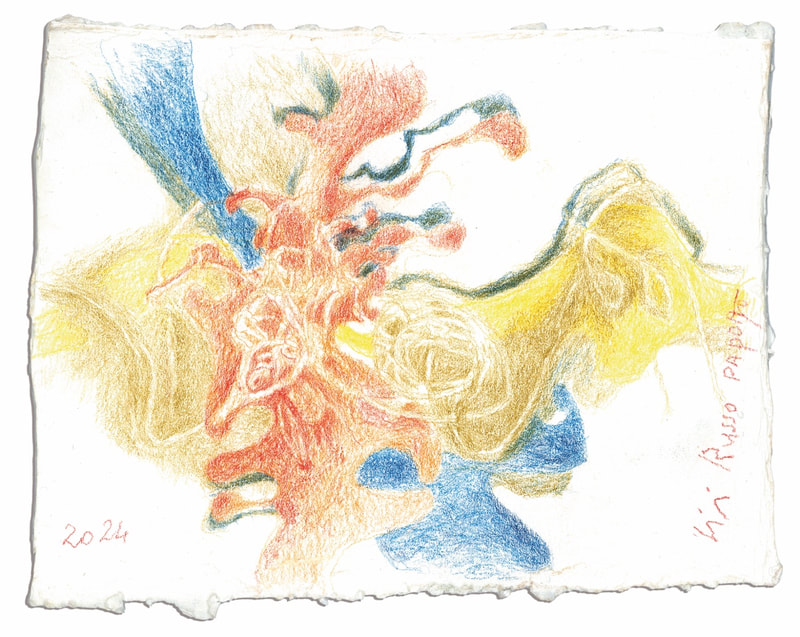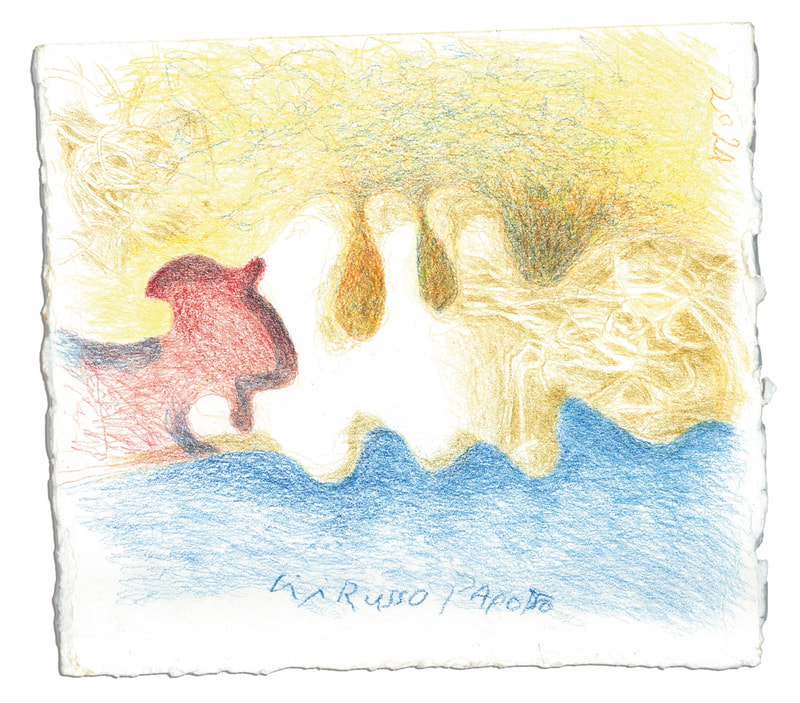LUIGI RUSSO PAPOTTO, "The Spirit of Play, JUNE 27- JULY 30
The spirit of play, the openness to lucky accident, the vision to see the plastic and poetic possibilities in the discord of the everyday, are central to the work of Papotto.
A visitor to an exhibit of Papottos sculptures, small moveable constructions made of screening, twisted wire, crushed cans, bottle caps looked and said “your friend the toymaker”. It was meant disparagingly but it was a compliment. Toys are the tools that open the world and allow us to discover connections that we would not have noticed or thought of. Objects that play different roles in different dramas, comic, tragic, farce, lyric and epic.
This spirit is still informing Papottos latest drawings. Although they are small in scale they are large in conception. Returning to his native Sicily the landscape dominated by the awesome Mount Etna, a presence both beautiful and ominous, seeps into the work. The mountain is never shown directly. The drawings are entirely abstract. They are more an abstract self-portrait of what happens in the shadow of the mountain. Papotto was after all born and grew up on its slopes. It is part of his anima. Returning to his native soil brings a spirit of play to his island roots, the great classical heritage of Magna Grecia and the grand Sicilian Baroque all in the shadow of the volcano.
A visitor to an exhibit of Papottos sculptures, small moveable constructions made of screening, twisted wire, crushed cans, bottle caps looked and said “your friend the toymaker”. It was meant disparagingly but it was a compliment. Toys are the tools that open the world and allow us to discover connections that we would not have noticed or thought of. Objects that play different roles in different dramas, comic, tragic, farce, lyric and epic.
This spirit is still informing Papottos latest drawings. Although they are small in scale they are large in conception. Returning to his native Sicily the landscape dominated by the awesome Mount Etna, a presence both beautiful and ominous, seeps into the work. The mountain is never shown directly. The drawings are entirely abstract. They are more an abstract self-portrait of what happens in the shadow of the mountain. Papotto was after all born and grew up on its slopes. It is part of his anima. Returning to his native soil brings a spirit of play to his island roots, the great classical heritage of Magna Grecia and the grand Sicilian Baroque all in the shadow of the volcano.




